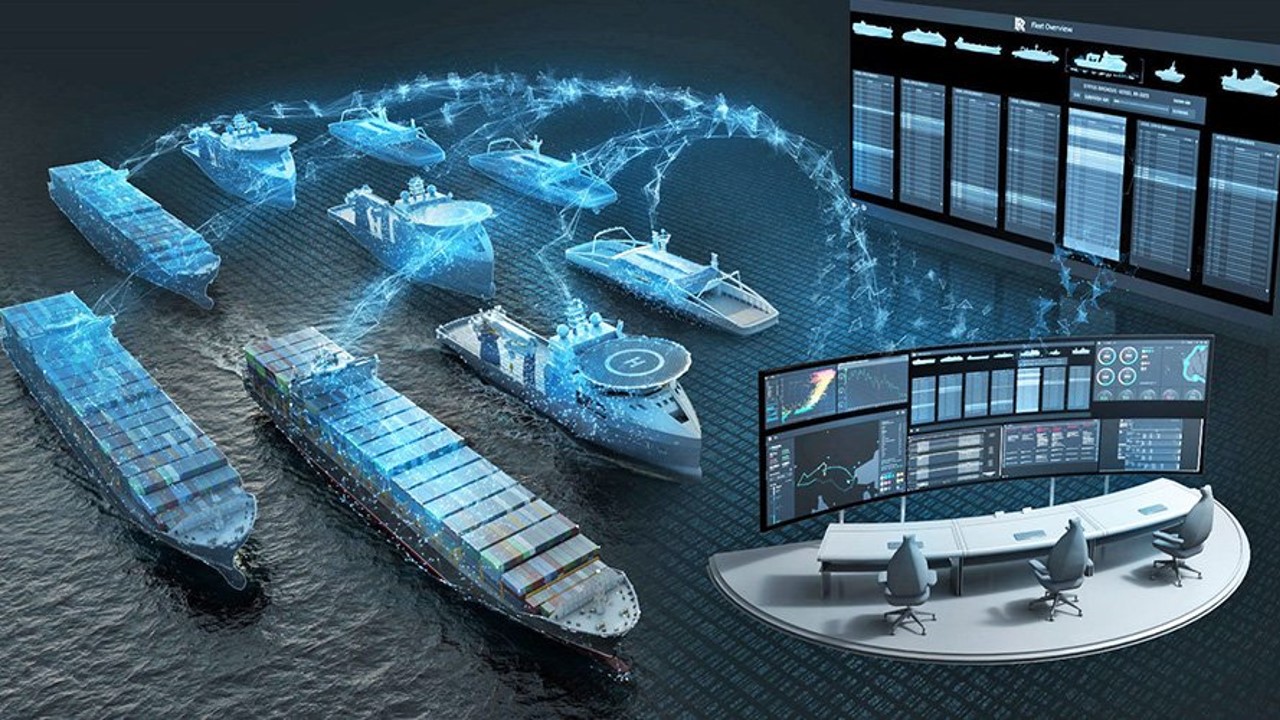Today, AI is used widely in many consumer and business sectors, and industrial sectors such as maritime are now showing significant growth in demand for AI systems.
In the maritime industry the adoption of AI has been growing gradually for a number of years and has recently exploded. In 2022 the maritime industry is forecast to spend $931 million USD on artificial intelligence solutions. That figure is forecast to more than double in the next five years to $2.7 billion USD by 2027, a compound annual growth rate of 23%. This rapid growth is driven in part by investment into the sector. In the last 12 months, $331 million USD has been invested in startups and SMEs developing AI solutions for the maritime sector, with a further $43 million in grant funding being awarded to develop the technology for the maritime sector around the world.
AI has the potential to revolutionise maritime operations and create significant competitive advantages for those companies that embrace it. But the pathways to adoption are not straightforward. Though incredibly powerful, this nascent technology is still in the earliest days of adoption in the industry. In this sense, the report includes recommendations to ship operators to ensure they have the best possible chance of success. These include working with the right data, buying in existing systems where possible, leveraging expertise to support developing systems, and creating a safe environment for testing new systems.
“In the maritime industry the adoption of AI has been growing gradually for a number of years and has recently exploded.”
The main inputs and contributions are:
Currently, the maritime industry is applying Artificial Intelligence in several ways. The use cases for AI in the maritime industry are wide ranging:
- Digital Twins – Digital Twin technology can be used to not only monitor and diagnose the current condition of an asset, but also to forecast its performance and future condition. Several applications in the maritime industry can be seen in anomaly detection, fault detection and isolation, asset diagnostics and prognostics, and operational optimisation solutions.
- Machine Learning and Data-Driven AI – In its current state, ML is classified into three areas; Supervised Learning, Unsupervised Learning, and Reinforcement Learning. Applications of supervised learning in the maritime industry can be seen in the forecasting of port traffic density using AIS data, and the classification of the carbon emission levels of various ships using the noon report data and environmental data. The unsupervised learning can be seen in the detection of vessel behaviour to improve situational awareness in ports and waterways, and the segmentation of vessel maintenance logs to identify central themes that affect the maintenance and operation of a vessel. And applications of reinforcement learning can be focused on the areas of marine engineering and naval architecture, where the design of a ship can be trained to sail in complex situations and help it learn to adjust to its environment.
- Knowledge-based AI – This is a form of AI where the knowledge of domain experts is translated onto a knowledge base for the use of an inference engine in decision making, analysis, and insight generation. These tools allow operators to easily monitor key environmental metrics and ensure compliance based on the agreed parameters in the charter party contract.
- Hybrid AI – It is the combination of knowledge-based AI and data-driven AI. The applications can be seen in high-level condition-based maintenance systems wherein a dynamically updated knowledge base works hand in hand with a supervised machine learning model to consistently identify potential machinery maintenance issues and failures.
- Natural Language Processing – NLP is a subfield of AI that deals with giving computers the ability to understand the text and spoken words in the same way that a human being can. This technology has been used such as in the preparation and processing of freight documents quickly and accurately.
- Neural Networks–Neural networks operate when a computer is trained to analyse samples of data for it to learn in performing the desired task. Several applications can be identified in object detection systems, and vessel performance modelling.
- Sensor fusion – It can be defined as the process of combining multiple forms of data from multiple sensors to perform data analysis and generate more accurate insights that apply to the AI’s desired output. This technology acts as a decision support tool for mariners and aims to reduce the risk of human error in navigational operations.
“The quality of the insight generated or the decisions made by an AI system will be directly correlated to the quality of the data it has access to.”




Leave a Reply